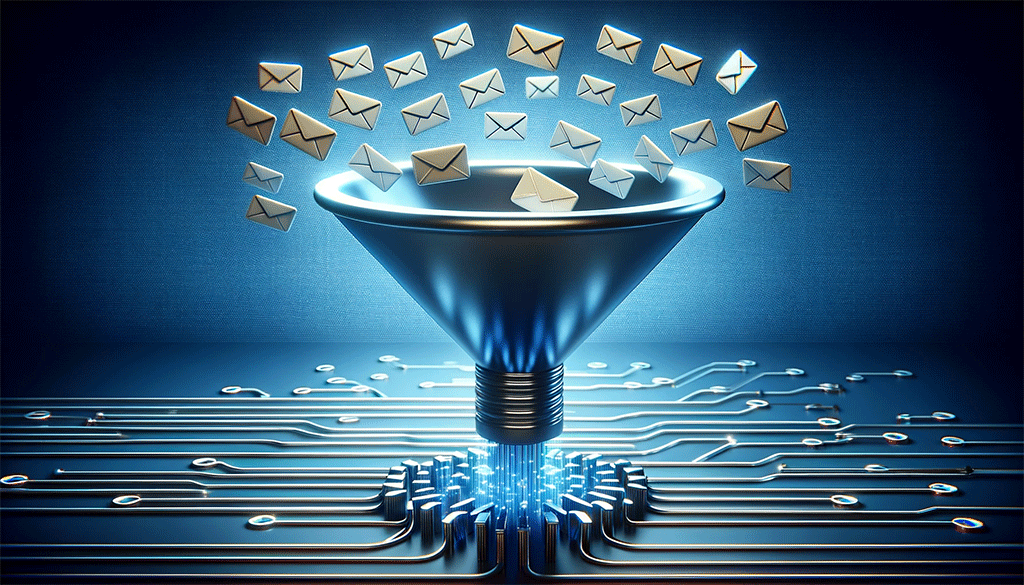“The best investment is in the tools of one’s own trade.“
~ Benjamin Franklin
Welcome to the exciting world of email marketing, where the magic of personalization and segmentation can really make a difference in connecting with your customers. As a small business owner, you have a unique opportunity not just to send emails but also to create special experiences tailored to different groups of your audience. In this quick hike, we're going to walk through the benefits of personalization and the skill of email marketing segmentation, showing you how these simple yet powerful strategies can help build stronger relationships with your customers and give your marketing efforts a real boost.
The Power of Personalization in Email Marketing
Personalization in email marketing is like having a tailored conversation with each of your customers. For small business owners, this can be a powerful way to deepen customer relationships and boost engagement. This approach leads to higher engagement, increased loyalty, and, ultimately, better sales for your small business. One of the vital components of personalization is segmentation. By incorporating forms of email marketing segmentation into your workflow, you'll vastly improve your ability to personalize your emails within your audience.
- Gathering Rich Customer Data: Start by collecting detailed information about your customers. For instance, if you own a local gardening supply store, track what your customers are purchasing. Are they buying more indoor plants or garden tools? Use this data to segment your audience. Tools like CRM software can help you organize and analyze this information.
- Creating Targeted Content: Based on the data, tailor your emails to match customer interests. For example, if a group of your customers frequently buys indoor plants, send them an email with tips on indoor plant care or a special offer on plant fertilizers. This targeted approach shows customers that you understand and cater to their specific interests.
- Personalization Techniques: Use personalization tokens in your email platform to customize each email. This goes beyond using the customer's name in the greeting. For example, include references to their last purchase or recommend products similar to what they bought. We noticed you bought a basil plant last week – you might love our new range of organic herb fertilizers!
- Leveraging Technology for Personalization: Many email marketing tools offer features like dynamic content, where the email content changes based on the recipient's profile. For instance, a customer who recently bought a barbecue grill might receive an email with grilling recipes and a special offer on grill accessories.
- Measuring Personalization Success: Keep an eye on key metrics like open rates, click-through rates, and conversion rates to gauge the effectiveness of your personalized emails. For example, compare the performance of a generalized monthly newsletter with a personalized product recommendation email. This will help you understand what resonates best with your audience.
How to Segment Your Email List for Better Targeting
For small business owners, segmenting your email list is like fine-tuning your instruments before a performance; it ensures you deliver the right message to the right audience. It's all about really honing your marketing to generate more engagement that leads to more conversions and sales. It's an essential tool for small businesses that maximizes the efficacy of marketing efforts.
- Identifying Criteria for Segmentation: Start by determining the criteria that matter most for your business. This could include demographic information (age, gender, location), purchase history (frequency, type of products purchased), or behavior (email engagement, website interactions). For instance, a local boutique could segment its customers based on purchase history: those who buy casual wear vs. more business or formal wear.
- Implementing Segmentation in Your Email Platform: Most email marketing platforms offer easy-to-use tools for segmentation. You can set up segments based on the criteria youve identified. For instance, if you run a pet supply store, you might create segments for dog owners, cat owners, and exotic pet owners. Each of these segments will have different interests and needs, which you can cater to in your emails.
- Crafting Targeted Content for Each Segment: Once your segments are created, tailor your content to suit each group. For example, your emails to the dog owners segment could include dog care tips, new dog product arrivals, and special offers on dog food. This targeted approach ensures that your content is relevant and engaging for each subgroup of your audience.
- Continuously Refining Your Segments: Segmentation isn't a one-time task. Regularly review and update your segments based on new data and customer feedback. Perhaps you find that some of your casual wear customers from the boutique are starting to show interest in formal wear. You might consider creating a new segment or adjusting your existing ones to reflect this shift.
- Benefits of Segmentation: Properly segmented email lists can lead to higher open and click-through rates, as your messages are more relevant to each recipient. It also helps in reducing unsubscribe rates, as people are less likely to opt out of content that aligns with their interests.
Examples of Segmented Email Campaigns
Let's take a quick look at a few examples that might help you visualize these strategies. Whether you're in retail, services, B2B, hospitality, or the non-profit sector, personalized email campaigns can significantly improve customer engagement, loyalty, and business growth.
- E-commerce Store Personalized Product Recommendations: An online retailer specializing in sports equipment could use customer purchase history to send personalized product recommendations. Customers who previously purchased running shoes received emails featuring running accessories, upcoming sales on athletic wear, and content related to running tips.
- Service Industry Customized Service Offers: A local beauty salon could segment its email list based on services previously purchased by its customers. They could send tailored emails offering discounts on their next visit for similar services. For instance, customers who had hair treatments received personalized offers for hair care products and complementary services. This strategy would help with higher appointment bookings and increased sales of their beauty products.
- B2B Campaign Industry-Specific Solutions: A software company offering business solutions could create segments based on industry type and company size. They would craft emails addressing the unique challenges and needs of each segment. For small businesses in the retail sector, the emails would focus on inventory management and customer relationship management solutions. This targeted approach would be geared toward higher lead generation and more effective engagement with potential clients.
- Local Cafe Community Engagement: A cafe could use email segmentation to engage with its local community. They should identify customers who frequently participate in cafe events and send them personalized invites to upcoming gatherings, along with special discounts.
- Non-Profit Organization Donor Engagement: A non-profit could segment its list based on past donation amounts and frequency. They should send personalized thank-you emails and updates on how the donations were making an impact. High-value donors received exclusive invites to special events.
As we finish up our hike along the trail of personalization and email marketing segmentation, it's clear how pivotal these strategies are for small business owners seeking to enhance their digital marketing impact. Personalization and segmentation aren't just about sending emails; they're about forging meaningful connections with your customers, understanding their unique needs, and providing value that resonates on a personal level.
Remember, the goal is to make each of your customers feel seen and understood. By leveraging the data you have, you can create personalized experiences that not only captivate your audience but also drive your business forward. As a small business owner, these tools give you the power to compete in a crowded market by delivering what your customers genuinely want and need.
So, take these insights, apply them to your email marketing strategy, and watch how they can bring about a significant change in your customer engagement and business growth. Personalization and segmentation are more than simple email marketing tactics; they're the keys to building lasting relationships with your customers.
FAQs on Personalization and Email Marketing Segmentation

See you out there!


